The Colour of Ink
La couleur de l'encre
Brian D. Johnson
2022
| 105 min
Documentary
English, Spanish, Japanese with English subtitles
Awards and Festivals
Award for Most Beautiful Documentary - Award for Best Documentary in Contemporary ArtMaster of Art Film Festival, Bulgaria (2024)
Audience Award for Best Feature FilmKnowlton Film Festival, Canada (2023)
Best Cinematography in a Feature Length DocumentaryCanadian Screen Awards, Toronto, Canada (2023)
Jury Award for Best Documentary Calgary Underground Film Festival, Canada (2022)
Nomination - Robert Brooks Award for Documentary Long Format CinematographyCanadian Society of Cinematographers, Canada (2023)
Official SelectionVictoria Film Festival, Canada (2023)
Official SelectionFestival cinéma du monde de Sherbrooke, Canada (2023)
Official SelectionDocAviv - International Documentary Film Festival, Israël (2023)
Official SelectionSan Francisco Documentary Film Festival, U.S.A. (2023)
Official SelectionBelleville Downtown DocFest International Documentary Film Festival, Canada (2023)
Official SelectionMontreal International Festival of Films on Art (FIFA), Canada (2023)
Official SelectionInternational Film Festival, Hong Kong (2023)
Official SelectionBarrie Film Festival, Canada (2023)
Official SelectionTIFF, Toronto International Film Festival, Canada (2022)
A Sphinx Productions and NFB co-production
Ink is our primal medium. It has always been with us, inscribing the evolution of humanity. The Colour of Ink uncovers the medium’s mystery and power through the eyes of Jason Logan, a visionary Toronto inkmaker. Working with ingredients foraged in the wild—weeds, berries, bark, flowers, rocks, rust—he makes ink from just about anything. Jason sends custom-made inks to an eclectic range of artists around the world, from a New Yorker cartoonist to a Japanese calligrapher. As the inks take on a life of their own, his playful alchemy paints a story of colour that reconnects us to the earth and returns us to a childlike sense of wonder.
Watch the Film
Trailer
Poster
Logline
The Colour of Ink uncovers the mystery and power of our oldest medium through the eyes of Jason Logan, a Toronto inkmaker. Harvesting colours from the natural world—weeds, berries, bark, flowers, rocks, rust—he makes ink from just about anything.
Excerpts
Jason shows his inks in progress
Koji Kakinuma uses Jason's ink
Margaret Atwood discusses the importance of ink
Jason creates ink by moonlight
Contact NFB publicist for broadcast-quality excerpts.
About Jason Logan
Jason Logan is an internationally recognized designer, creative director, author and artist. His illustrations appear regularly in the New York Times, and his fine art has been exhibited in New York City, Los Angeles, Toronto and the Yukon. His work has been recognized by the American Institute of Graphic Arts, the Society of Publication Designers, the Centre for Social Innovation and the Canada Council for the Arts. His most recent book, Make Ink: A Forager’s Guide to Natural Inkmaking, was included in The Guardian’s list of best books of 2018. His next book, How to Be a Color Wizard, will be published by MIT’s new children’s division. He is featured in a documentary about ink directed by Brian D. Johnson and produced by Ron Mann, with the support of the National Film Board of Canada.
Director's statement from Brian D. Johnson
Why make a film about ink? As an author and journalist, I’ve spent most of my life working with the stuff, before print went virtual. I never thought about it much. Like most writers, I took ink for granted. When I began to make films, after decades of trying to figure out what to make of them as a film critic, I was thrilled by the tangible substance of the moving image. Here was a liquid medium that allowed me to write without words.
Ink found me by happenstance. The moment I first saw Jason Logan’s alchemical “ink tests” come alive under a macro lens, it was like peering into a cinematic, undiscovered cosmos. As a critic, I had always been on a mission to find a movie that showed me something I’d never seen before, something I didn’t know I was looking for. The urge to see the secret life of ink magnified on a theatrical scale compelled me to make this improbable film.
The story was hiding in plain sight. Ink is a primal medium that connects us like nothing else, and in Jason’s hands, it was no longer dead on the page. Here was someone driven by a bold and original idea—that the world’s oldest storytelling medium had its own story to tell.
I’d known him since his Art Director days at Maclean’s magazine, where I worked as an arts writer for three decades. We reconnected in 2014 while I was shooting my previous film, Al Purdy Was Here, about an iconic Canadian poet. Jason made his first ink with black walnuts from a tree near Purdy’s statue in Queen’s Park, Toronto. And he’d started an anonymous Twitter feed, observing tiny incidents in the park from the statue’s P.O.V. Inevitably, his tweets found their way into the film. We also shot him making black walnut ink—the footage was left on the cutting room floor, but it planted a seed.
Jason and I have had parallel trajectories. We’ve both spent most of our lives working in publishing, creating words and pictures that became ink on paper. He never set out to be an inkmaker; one day he picked up a black walnut and cooked it. I never set out to be a filmmaker; I picked up a digital camera and began to write with images rather than about them. Somehow our rabbit holes aligned, and we ended up on the same path, following a line of ink to see where it went.
The movie was planned as a road trip, a Google-mapped odyssey shot in seven countries. We had covered three of them (Canada, the U.S. and Mexico) when COVID hit. Unable to leave the country, I directed shoots remotely in Japan, Italy, Norway and the U.K. with local crews. Jason couldn’t travel either, but fortunately his inks could. That’s how he normally operated, sending bottles of ink to artists around the world by mail.
The ink was our compass. As we followed its erratic pull, there was no predicting where it would lead, or what it might do in the hands of a cartoonist in Brooklyn or a calligrapher in Tokyo. From a foraged landscape to the edge of a brush, Jason’s ink came full circle, and the artists who brought it into the world never ceased to surprise us.
The Colour of Ink is about curiosity, about noticing what’s at your feet, picking it up, and giving it a second look. Over the course of our journey, Jason and I came to realize that filmmaking and inkmaking followed a similar route: scout, forage, sort, combine, intensify, refine, test, package, present. And the more you do it, the more you understand it’s all about the process. The film’s goal was to capture the tenderness of that process, the fleeting magic of contact. For me, as both a critic and director, that has always been cinema’s essential mission, to leave the audience with an enduring, and evolving, sense of wonder.
– Brian D. Johnson, July 2022
FEATURED ARTISTS IN ORDER OF APPEARANCE
KOJI KAKINUMA
Born in 1970, Koji Kakinuma began studying Japanese calligraphy at the age of five. He apprenticed first with his father, Suiryu Kakinuma, then Yukei Teshima and Ichijo Uematsu. Inspired by the 9th-century Japanese monk and calligraphic poet Kōbō Daishi (Kükai), he integrates Buddhist tradition and modernist aesthetics in large-scale, performative works. A graduate of the Department of Visual and Performing Arts at Tokyo Gakugei University, Koji was a visiting scholar at Princeton University from 2006–2007. He is the first living calligrapher to have a solo exhibition at the Kanazawa 21st Contemporary Art Museum in Japan (2013–2014). He has been exhibited around the world, notably at New York’s Metropolitan Museum and the Kennedy Center in Washington, D.C.
ROXX
Born in the U.K. and based near Malibu, California, Roxx is a tattoo artist working exclusively with black ink. Blending mark-making, blackwork and geometric motifs, her tattooing developed from a body of work spanning over three decades and six countries. Her technique honours traditional Indigenous, spiritual and tribal cultures. Roxx creates unique patterns inspired by forms occurring in nature and architecture, viewed through her queer-punk sensibilities. She creates freehand, one-of-a-kind pieces adapted to the contours of each client’s body. Her work has appeared in the New York Times, GQ, Vogue and The Ellen Show. And her work was honoured in the 2017 MoMA exhibit Items: Is Fashion Modern?
LIANA FINCK
Liana Finck is a cartoonist, writer, illustrator and Instagram star who has been a regular contributor to the New Yorker magazine since 2015. She is the author of four books: The Bintel Brief (2014); Excuse Me: Cartoons, Complaints and Notes to Self (2019); her graphic memoir Passing for Human (2018); and Let There Be Light: The Real Story of Her Creation (2022). She is a recipient of a Fulbright Fellowship, a New York Foundation for the Arts Fellowship, and a Six Points Fellowship for Emerging Jewish Artists. She posts a weekly newsletter on Substack: Weekly Drawings by Liana Finck.
ESTHER VAN HULSEN
Born in the Netherlands in 1981, Esther Van Hulsen is a wildlife artist based in Oslo. Her award-winning work has appeared in publications ranging from Nature magazine to National Geographic. Her originals are featured in museum collections in Europe and the United States. She was also the principal artist for 22 books on natural history and palaeontology encompassing more than 1,500 individual paintings and drawings, published in Europe, China, Japan and the U.S.
HEIDI GUSTAFSON
Heidi Gustafson is an artist and ochre specialist based in the Cascade foothills of northern Washington. Her Ochre Sanctuary project has been featured in publications including The New York Times, American Craft, Colossal and China Life Magazine. Her collaborative practice “bridges knowledge between nonhuman lifeforms, naturalists, Indigenous artists, scientists, citizen foragers, artisans, painters, soothsayers and land worldwide.” A graduate of the Maryland Institute College of Art, she holds an MA in Philosophy and Religion from the California Institute of Integral Studies.
COREY BULPITT
Known as Taakeit Aaya or “Gifted Carver” by the Haida of the Naikun Raven clan, Corey Bulpitt was born in Prince Rupert, B.C., in 1978. He’s a painter, jeweller and wood and argillite carver. He used to spray-paint large-scale paintings with urban youth in Vancouver and has created graffiti pieces as a member of the Beat Nation Live arts collective. He assisted in crafting a 30-foot pole with Klatle Bhi for the 2010 Winter Olympics and a performance art project for the Sydney Biennale, and worked on the Solstice Pole at the northern tip of Haida Gwaii. In 2017, he received the BC Creative Achievement Award for First Nations Art for Artistic Excellence in both traditional and contemporary visual art.
FIDEL CRUZ LAZO & MARIA LUIZA MENDOZA DE CRUZ
These Zapotec dye makers and weavers operate the Casa Cruz gallery and dye factory in the village of Teotitlán outside Oaxaca City. After marrying at the age of 17, they created their own “artisanias.” Instead of using the chemical dyes favoured by other weavers in the village, they experimented with natural substances used by their Indigenous ancestors, such as cochineal, indigo and tarragon. Since then, their work has won awards, international acclaim and recognition in a book devoted to their work, The Colors of Casa Cruz.
MARGARET ATWOOD
Born in Ottawa in 1939, Margaret Atwood is one of the world’s most iconic contemporary authors. She has been published in more than 45 countries and is the author of more than 50 books of fiction, poetry, critical essays and graphic novels. Her latest novel, The Testaments, is a co-winner of the 2019 Booker Prize. It is the long-awaited sequel to The Handmaid’s Tale, now an award-winning TV series. Her other works of fiction include Cat’s Eye, finalist for the 1989 Booker Prize; Alias Grace, which won the Giller Prize in Canada and the Premio Mondello in Italy; The Blind Assassin, winner of the 2000 Booker Prize; The MaddAddam Trilogy; and Hag-Seed. She lives in Toronto. The Colour of Ink marks Atwood’s third appearance in a film by Brian D. Johnson, after Al Purdy was Here in 2015 and the 2010 short Yesno.
GRACE LYNNE HAYNES
A California-born visual artist based in New Jersey, Grace Lynne Haynes creates work that questions the very nature of colour and how historically symbolic meanings ascribed to colours and shades, especially black, are constructed. Juxtaposing bright colours against flat, silhouette-black female bodies, her images embrace the nuances of Black womanhood while challenging the stereotypes surrounding it. In 2020, the New Yorker commissioned her to paint a cover portrait of Black civil rights pioneer Sojourner Truth to commemorate the 100th anniversary of American women winning the right to vote. It was followed soon after by her vibrant cover for the magazine’s Style & Design Issue.
YURI SHIMOJO
Yuri Shimojo is a Tokyo-born, contemporary Japanese painter who lives and works between New York and Kyoto. The last descendent of her samurai clan, she lost all her immediate family before the age of 30. Yuri paints to express the interconnected emotions of joy and pain, using Japanese watercolour and inks to create work that combines the abstract and the surreal, often playfully and always evocative of the desire for universal compassion. Her style is grounded in traditions, from Ikebana flower arrangement to Noh and Kabuki theatrical art. She has exhibited in the United States and Japan and in private collections around the world.
ARVID AL CHILABI
Based in Louisville, Kentucky, Arvid Al Chilabi (a.k.a. Arvid Roach) is a product designer and data enthusiast who works for Minimal Inc. He’s also the virtuosic calligrapher in the “Custom Namiki Falcon Resin Fountain Pen” video, which has had 14 million views since it was posted on YouTube in 2012.
THOMAS LITTLE
Thomas Little is an ink and pigment maker operating out of rural North Carolina. Central to his practice is the dissolution of firearms to create iron-based pigments. With these materials, he experiments within the traditional arts of drawing, painting and printmaking—and performs scientific experiments, which include using his iron oxide pigments as a sound recording medium and also as a method of staining slime mold mucus trails. He has curated exhibits on pigment making, taught numerous workshops, and contributed his creations to the material libraries of the University of Massachusetts and the University of Pennsylvania.
JULIA NORTON
Julia Norton is a multidisciplinary artist, educator and colour material researcher. She works with natural materials such as ochres and mineral pigments, as well as dyes and inks made from plants. She holds an MFA from SUNY Purchase and an Ed.M. from the Harvard Graduate School of Education. She has exhibited at galleries such as Lyles & King (NYC), The Wassaic Project (Wassaic, NY) and Dread Lounge (Los Angeles, CA). She has worked as an arts educator at the New Museum, Pioneer Works, Swiss Institute, Abrons Art Center, Dia Beacon and Harvard Art Museums, which runs in conjunction with the Forbes Pigment Collection.
WENDY MACNAUGHTON
Based in San Francisco, Wendy MacNaughton is an illustrator and graphic journalist who contributes regularly to the New York Times. While on assignment for the Times in the courtroom at Guantanamo Bay, she foraged materials from her heavily censored surroundings that Jason Logan used to make inks. Wendy has illustrated numerous books, including the best-selling Salt Fat Acid Heat. In talks and workshops, she advocates for “deep looking, listening and visual storytelling via drawing as a social justice practice, and as a crucial element in childhood development.”
MARTA ABBOTT
Marta Alexandra Abbott is a Czech-American artist born in Amsterdam, raised in the U.S., and based in Rome. She grew up in the studio of her artist mother, studied fine arts at university, and trained professionally in art restoration and floral design before turning her full attention to painting. She primarily uses inks and pigments she makes from organic, botanical substances. Marta has exhibited her work in New York, Prague, Rome and Florence, among other cities, and her paintings are in private collections around the globe.
SORAYA SYED
Born in England and based in London, Soraya Syed is a classically trained calligrapher, artist and filmmaker who pushes the boundaries of what is expected from a traditional art form. She takes the written word off the page into film, dance and VR and has worked with Google, the British Museum and the Royal Shakespeare Company. In 2005, she was awarded the icazetname (the authoritative Islamic calligraphy licence) from Istanbul. She sees Islamic calligraphy as a living tradition with a capacity for self-renewal that enables her to adopt a contemporary approach while remaining true to her artistic heritage. Her work has been exhibited widely, including at London’s Barbican Centre venues in Istanbul, Tehran, Kuwait and the United Arab Emirates.
Images
Loading...
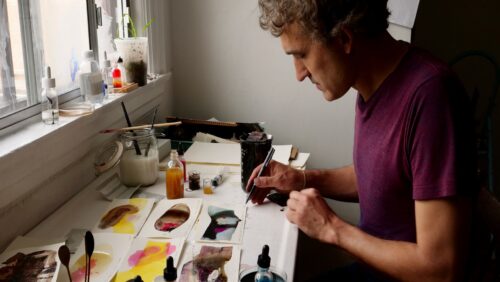 Photo: Brian D. Johnson
Photo: Brian D. Johnson
Download
Loading...
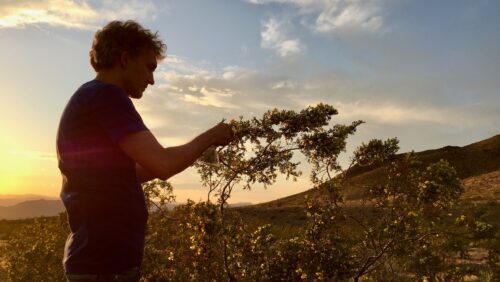 Photo: Brian D. Johnson
Photo: Brian D. Johnson
Download
Loading...
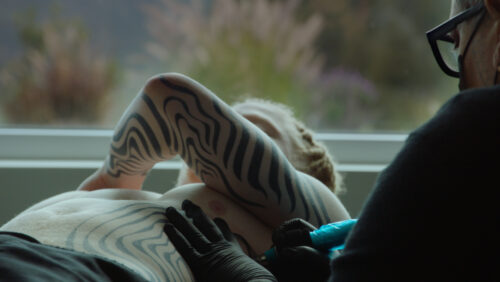
Download
Loading...
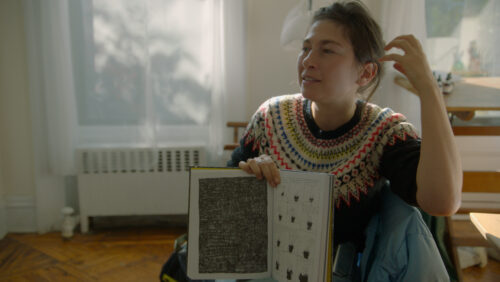
Download
Loading...
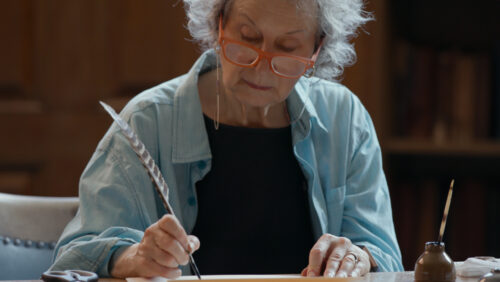
Download
Loading...
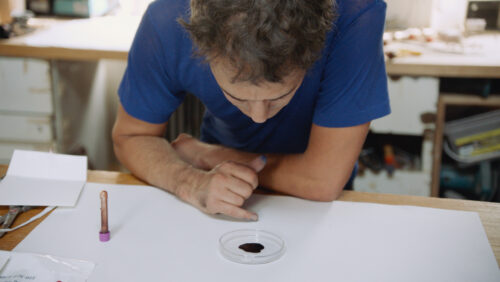
Download
Loading...
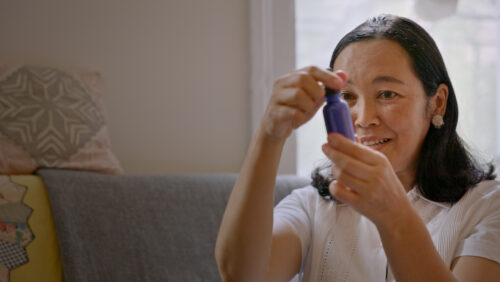
Download
Loading...
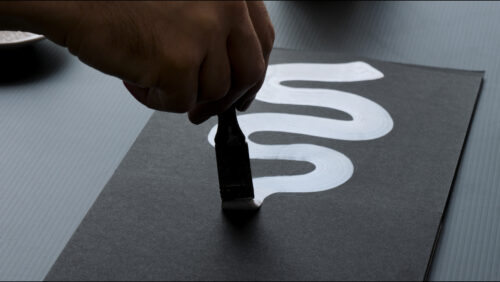
Download
Loading...
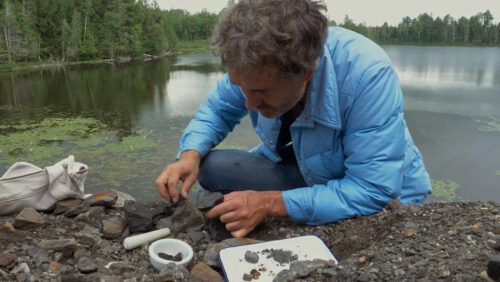
Download
Loading...
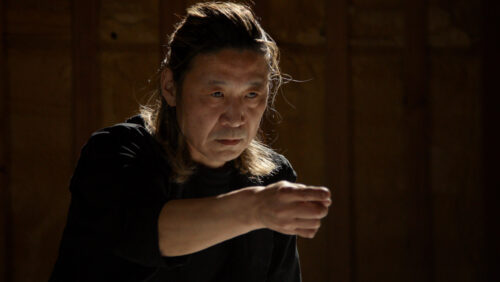
Download
Loading...
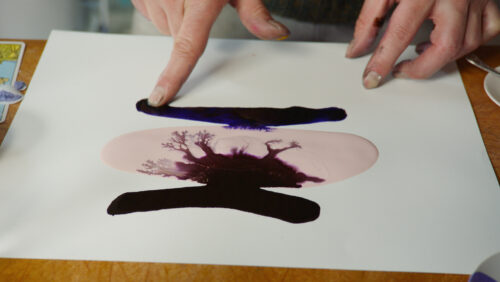
Download
Contact NFB publicist for high-resolution images for print.
Team
Brian D. Johnson
Writer, Filmmaker, Producer
Photo
Photo : Brian D. Johnson
Sherien Barsoum
Producer (NFB)
Photo
Photo : Pasquale Marco Veltri
Lea Marin
Producer (NFB)
Photo
Photo : NFB
Kate Vollum
Associate Producer (NFB)
Photo
Anita Lee
Executive Producer
Photo
Ron Mann
Executive Producer
Photo
Photo : Sphinx Productions
Credits
Written and Directed by
BRIAN D. JOHNSON
Featuring
JASON LOGAN
Director of Photography
NICHOLAS DE PENCIER, C.S.C
Editor
ROBERT KENNEDY
Composer
DON KERR
Produced by
SHERIEN BARSOUM
BRIAN D. JOHNSON
LEA MARIN
Executive Producers
ANITA LEE
RON MANN
Associate Producer
KATE VOLLUM
A
SPHINX PRODUCTIONS
and
the NATIONAL FILM BOARD OF CANADA
co-production
Produced with the participation of
ROGERS CABLE NETWORK FUND
TELEFILM CANADA
ONTARIO CREATES
In association with
DOCUMENTARY CHANNEL
FEATURING
(In Order of Appearance)
JASON LOGAN
KOJI KAKINUMA
ROXX
JUSTIN BULLOCK
CATS KELLY
LIANA FINCK
ESTHER VAN HULSEN
HABUCUC AVENDARIO LUIS
HEIDI SOPINKA
SOREN LOGAN
WINTER LOGAN
LUX LOGAN
HEIDI GUSTAFSON
COREY BULPITT
MANUEL LOERA FERNANDEZ
FIDEL CRUZ
MARIA CRUZ
MARGARET ATWOOD
YURI SHIMOJO
ARVID AL CHALABI
THOMAS LITTLE
JULIA NORTON
WENDY MACNAUGHTON
MARTA ABBOTT
SOROYA SYED
CHRIS FOUTS
MARTA ABBOTT
SORAYA SYED
EVA NOVAK
Production Manager
NADIA TAVAZZANI
Production Coordinators
MALLORY ANDREWS
MERCY LAM
KAZUYOSHI EHARA (Japan)
Animation Director
CRAIG SMALL
Additional Cinematography
BLAKE HANNAHSON
DEREK HOWARD
BRIAN D. JOHNSON
JAMES ARTHURS
CAM RODEN
Location Camera
KEISUKE ORIKASA (Japan)
MASATO GUNGI (Japan)
ADRIAN STOREY (UK)
KATRINA TAN (Italy)
TIM HAUKENES (Norway)
QUINN THOMASHOW (Vt, USA)
Director of Photography (Japan)
KAZUYOSHI EHARA
Drone Photography
MIKE REID
JOSHUA MacDONALD
SILVIO REPETTO
PATRICK SHANNON
ISIS MONTEUX
JACK SMITH
Camera Assistants
CHRIS NIESING
JEFFERSON CRAWFORD
Sound Recordist (London)
JOE HARRIS
Assistant Editors
LU ASFAHA
ALYSHA BAKER-DIAZ
Post Production Services Provided by
Urban Post Production
Re-Recording Mixers
KEITH ELLIOTT
RUDY MICHAEL
Re-Recording Assistant
LUCAS CECCHETTI
Sound Editors
CHRIS MATHESON
LAUREN RICE
Foley Artists
MATT THIBIDEAU
Foley Recordists
DAVE MERCEL
ADR Recordist
EHREN PFEIFER
Online Editor
KYLE CAMPBELL
Colourist
ANDREW MANDZIUK
Post Producer
IKE MURPHY
V.P. of Operations
ROBERTA BRATTI
Picture Operations Manager
BRUCE REES
Picture Facility Technician
JON MORRISON
Closed Captioning
QUAY MEDIA SERVICES
Descriptive Video
WANDA FITZGERALD
Archival Research
ELIZABETH KLINCK
Archival Research Coordinator
NED CURRIE
Music Supervisor
AMY FRITZ
Story Editor
MARNI JACKSON
Consulting Geologists
CHRIS FOUTS
AARON J. CELESTIAN
Guides/Interpreters
DENISE LECHER
LINDA HANNA
TONIO RECAMIER
Production Assistants
LÍVÍA SA
MELISSA JENKINS
BILL BEST
Translators
AMY LOO
KAZUYOSHI EHARA
Transcription & Translation
MULTIMEDIA TRANSCRIPTS
POWER OF BABEL
Production Accountants
PATRICIA ROSE
AUDREY QUINN
Production Auditor
KUDLOW & McCANN
JIMMY YE
Legal/Clearance Counsel
HALL WEBBER LLP
LON HALL
MICHAEL SNIDERMAN
DANIEL GOLDENBERG
MITCHEL FLEMING
Insurance
FRONT ROW INSURANCE BROKERS INC.
DARLENE MILLEY
THE NATIONAL FILM BOARD OF CANADA
Studio Operations Manager
MARK WILSON
Production Supervisor
MARCUS MATYAS
Senior Production Coordinators
KATIE MURRAY
ADRIANNA MARLING
Technical Coordinator
KEVIN RILEY
Technical Assistants
Q’MAL LABAD-WORKMAN
SHAGHAYEGH HAGHDOUST
Studio Administrator
ANDREW MARTIN-SMITH
Marketing Manager
JAMIE HAMMOND
JESSICA GEDGE
Publicist
JENNIFER MAIR
Legal Counsel
PETER KALLIANIOTIS
Documentary Channel
Executive in Charge of Production
JORDANA ROSS
Senior Director
SANDRA KLEINFELD
SPECIAL THANKS TO
DR. BRANDI MACDONALD
CHARMAINE LURCH
DON MCKELLAR
JOHN MOTTISHAW
TIM MCLAUGHLIN
WENDY MACNAUGHTON
JOHN IRVING
& CHRIS WHYNOT FOR “ALL YOU HAVE TO DO”, HIS 1982 FILM ABOUT JASON’S MOTHER
THANKS TO
AARON CELESTIAN
ALESSANDRA DACCO
ANNE MACKENZIE
ANGELA SHENG
BILL HOUSE
BOBBY FURGO
CARLIE MACFIE
CAROL MCBRIDE
DANIEL IRON
DARLENE MILLEY
DAVID RUMSEY
DENIS VILLENEUVE
DIONNE BRAND
ERIC GERINGAS
ERIC MINDLING
DR. FIONA McNEILL
GRACE LYNNE HAYNES
HELGA STEPHENSON
JUDY KOONAR
JAKE YANOWSKI
JANET BURKE
JASON COLLETT
JOHANNA SCHNELLER
KYRISTI KEENER
KRYSTYNE GRIFFIN
LARRY WEINSTEIN
LAURENT NUSSE
LAYNE COLEMAN
LISA NAFTOLIN
MALLORY ANDREWS
MARTIN COOPER
MATTHEW BARNES
MATT WALKER
MERCY LAM
MICHAEL BOYUK
MICHAEL MCMAHON
MICHAEL ONDAATJE
PAULO HERRERA
PETER LAYWINE
PETER WELFARE
RICH WILLIAMSON
RŪTA
RYAN ENGLISH
SARAH NAIMPOUR
SCOTT PERL
SHERNAZ ITALIA
SIMON ENNIS
STURLA GUNNARSSON
SUSAN MOFFAT
TERI HART
TERRANCE ODETTE
TILKE ELKINS
VICTORIA PICKERING
YNG RU CHEN
CALACATA BORGHINI
JACQUES HERBIN
LAKESIDE GEMS
MERCURY FILMS
MCMASTER UNIVERSITY
NATURAL HISTORY MUSEUMS OF LOS ANGELES COUNTY
NATURAL HISTORY MUSEUM, UNIVERSITY OF OSLO
NIBS.COM
PARADISE THEATRE
PRIMITIVE ENTERTAINMENT
RESTAURANT FIORISTA
2 INDISPENSIBLE BOOKS — JASON LOGAN’S ‘MAKE INK’ & TED BISHOP’S ‘THE SOCIAL LIFE OF INK’
MUSIC
ORIGINAL SCORE PERFORMED BY
Musicians
DON KERR – Drums, Cello, Voice, Piano, Guitar, Synth
MIKE O’BRIEN – Guitar, Piano, Synth
JASON HABERMAN – Synth, Bells
CHRISTINE BOUGIE – Lap Steel, Guitar
EMILY STEINWALL – Flute, Saxophone
TOM RICHARDS – Trombone, Piano
JAMES RHODES – Trumpet
HUGH MARSH – Violin
BRIAN D. JOHNSON – Percussion
Vocals
FELICITY WILLIAMS
LUX LOGAN
BLUE MEDLEY
Arrangements by
TOM RICHARDS
Vocalist and Vocal Arrangements
ALANNA STEWART
Music Producer and Mixer
TOM RICHARDS
Musicians
TOM RICHARDS – Trombone
EWEN FARCOMBE – Piano
NICK FRASER – Drums
JACOB GORZHALTSAN – Clarinet
ALINE HOMZY – Violin, Viola
SCOTT PETERSON – Bass
JAMES RHODES – Trumpet
Recording Studio
Union Sound
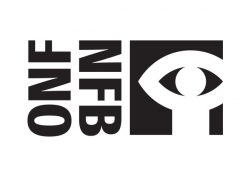

This motion picture is protected under the laws of Canada, the United States of America and other countries. Unauthorized duplication, distribution or exhibition may result in civil liability and criminal prosecution.
© 2022, 2739691 Ontario Inc. and the National Film Board of Canada
Media Relations
-
About the NFB
For more than 80 years, the National Film Board of Canada (NFB) has produced, distributed and preserved those stories, which now form a vast audiovisual collection—an important part of our cultural heritage that represents all Canadians.
To tell these stories, the NFB works with filmmakers of all ages and backgrounds, from across the country. It harnesses their creativity to produce relevant and groundbreaking content for curious, engaged and diverse audiences. The NFB also collaborates with industry experts to foster innovation in every aspect of storytelling, from formats to distribution models.
Every year, another 50 or so powerful new animated and documentary films are added to the NFB’s extensive collection of more than 14,000 titles, half of which are available to watch for free on nfb.ca.
Through its mandate, its stature and its productions, the NFB contributes to Canada’s cultural identity and is helping to build the Canada of tomorrow.
-
About Sphinx Productions
Sphinx Productions is a documentary film and television production company, based in Toronto, Canada, that has been producing award-winning films since 1980. Recent productions include Ron Mann’s Carmine Street Guitars a feature length documentary about the legendary Greenwich Village guitar shop.
http://www.sphinxproductions.com/